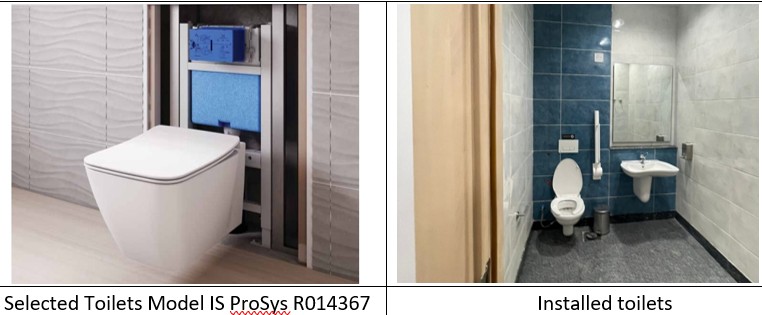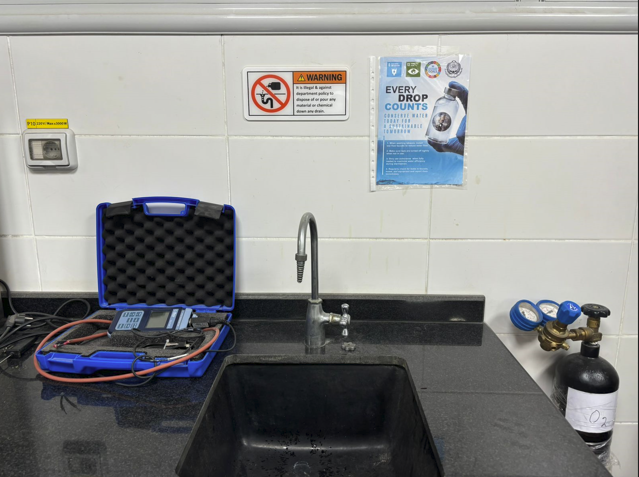
AASTMT is required to adhere to mandatory building standards established by the Egyptian government as part of the licensing process. Failure to comply with these regulations may lead to penalties, legal action, or the rejection of building permit applications. These standards encompass key measures related to water management, sanitation, and sustainable resources management, ensuring compliance with national guidelines.
Besides, the plumbing system design at AASTMT follows best practices to guarantee safe distribution of potable water, effective wastewater disposal, and environmental protection against contamination. Applicable Codes:
Link for evidence: Governmental Building Standards
List of upgrades in campus infrastructure carried out in 2023-2024:
Category | Upgrade Description |
Water Pumping & Distribution | • Installed new control panels for water pumps in Housing A & B. |
Water Treatment (Desalination) | • Upgraded two control panels serving the main desalination plant. |
Irrigation System Modernization | • Installed seven automated control panels for campus irrigation units. |
Water Conservation Support Infrastructure | • Campus-wide upgrades to LED lighting reducing indirect cooling-water demand. |
Swimming Pool Systems Support | • Installed four high-efficiency 200-W LED floodlights at the Marine Safety swimming pool area to support safe operation of pool water systems. |
Distribution Boards Supporting Water Assets | • Modernized low-voltage distribution boards serving pumps, irrigation controllers, and desalination systems. |

Besides those standards, AASTMT applies general design standards for its buildings and facilities to minimize water usage such as:
Reducing Water Usage for Vehicle Washing: AASTMT has reduced the frequency of washing its on- and off-campus vehicles, minimizing water consumption.
AASTMT's Comprehensive Water Management Strategy: Water Saving, Water Efficiency, and Sustainable Practices
Besides those standards, AASTMT applies general design standards for its buildings and facilities to minimize water usage such as:
Campus upgrades and following building standards on AASTMT webpage




41 students from the Academy`s branches from Abu Qir, Wabour Al Mayah, Smart Village and Heliopolis participated in the event. The main purpose of the initiative was to:
Climate Protectors Initiative on AASTMT webpage
Campus Awarness for Water Conservation on AASTMT webpage

